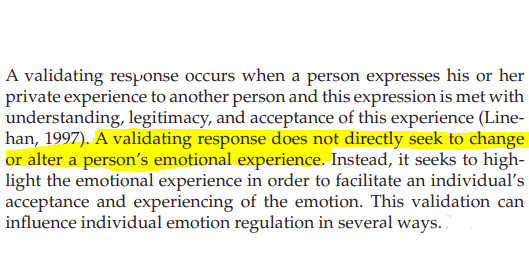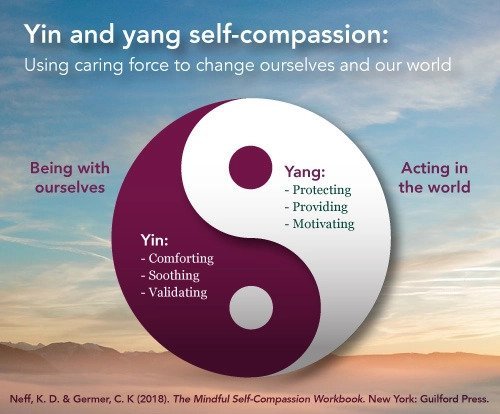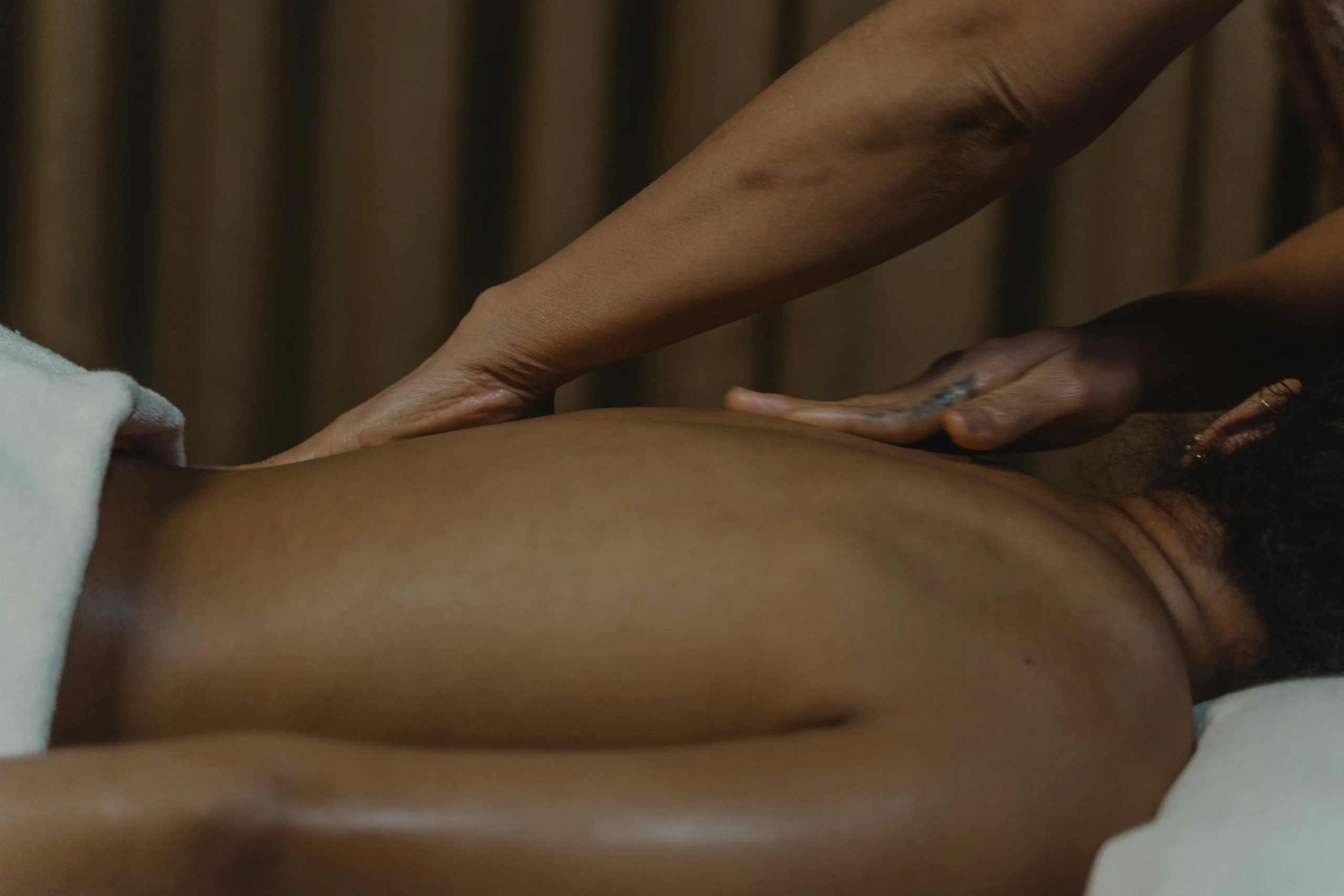For this exercise, imagine that your partner has had a difficult, stressful day. To give them compassionate support you offer them a massage. A massage won’t solve their problem, but it may help them to feel better. It doesn’t require any special skills, though a bit of practice and training can really help. They may be even better then you at giving massages but it’s not really something they can do particularly well for themselves. It’s something you offer to them, without expecting anything in return. It’s something they generally receive rather than actively participate in and yet it can be challenging for them to lay down and receive your kindness. And, whether you are excellent at giving massages or not, whether you have a ton of experience with their body and their needs in the past or not, you have to rely on their feedback to use the right pressure and strength and to touch them where they need it most. There’s no such thing as massaging too hard or too soft, in the right place or in the wrong place, except in so much as you are meeting their personal wants, needs and requests in the moment.
This exercise will touch on all three aspects of compassion, and can take anywhere from 10 minutes to an hour or longer, depending on the recipients needs and the givers stamina in the moment. When practicing this exercise it’s important to consider titration- start with something manageable and generally outside of the relationship rather then something more sensitive and severe or that might risk triggering both of you. Just like in a massage, one person will give and another recieve. You might take turns or trade places but for now offer this gift freely, without an expectation for immediate reciprocation. Remember that this is about offering them relief and support around their painful aches and stress-filled tensions.
Step One- Brining mindfulness to the pain
The person receiving the compassion massage will need to take a moment to share their hurt. This step can take as long as it needs to, and consists of describing in emotional detail and re-experiencing a stressful or painful event by the receiver. For the giver, this initial steps includes neither reaction or response, but instead active listening and validation. Once the receiver feels seen, heard and understood they will signal the giver to move on to step two.
Step Two- Connect to common humanity
The giver offers a series of phrases and responses aimed at helping the receiver move from a place of isolation to one of common humanity. They remind the receiver that all creatures suffer, and that suffering is part of life. That suffering isn’t a sign of being broken or that they are a ‘bad’ human, but rather that they are human, and like all humans sometimes experience pain. And that while their pain and experience is unique, so is everyone else’s, and there are no doubt countless other humans who are experiencing the same thing. The receiver offers feedback and helps guide the giver to their specific areas of hurt and the type of pressure they need.
Step Three- Loving kindness for the stress itself/ Tenderness for the Pain
Have a conversation about what kinds of nurturance and support might benefit the receiver. It’s important in this step that the couple not work towards any sort of solution or relief tied directly to the problem. Instead this is about offering loving kindness and support during a time of need.
Step Four-Loving kindness for the stressor itself/ Fierceness for the Problem
This step will vary greatly depending on the nature of the problem but is important to complete every time you perform the couples compassion massage. Whether the giver is able to completely resolve the receivers issue on their own or offer only a few words of support, in this step they do what they can to solve the problem or offer relief.
Step Five- Offer feedback and gratitude
Discuss the experience, offer feedback and gratitude for the opportunity to love one another in this way. Praise one another for overcoming the challenges of the exercise and offer vulnerability around the areas of lingering tension.
Bringing mindfulness to the pain
My time as a therapist, a rich body of research literature and my own relationships all seem to suggest that the greatest barrier to helping one another is, paradoxically, an anxiously urgent desire to help one another. When we find ourselves in pain we all too often rush towards relief without taking the time to connect with or understand the messages those signals of pain are sending. Often when someone we love or even a passing acquaintance reaches out to us for support we rush to solve their problem without taking the time to adequately see and understand or validate their pain.

In this first step the receiver not only describes their pain but seeks also to verbally process their situation. It’s important they allow themselves to experience their emotions and be willing to sit with any strong feelings this process may evoke. Feeling the sensations of emotion, noting the pit in your stomach or allowing yourself to become upset enough to have shaky hands or flushed cheeks may be part of your process. For that reason it’s crucial that this exercise be practiced mindfully, and with an understanding of titration.

When coping with painful experiences and traumatic memories it’s important to sit with rather than run away from the unpleasant experiences, but always within the extent of your window of tolerance. Titrate your practice of the compassion massage by working with emotional challenges that aren’t beyond your present moment capacity, especially at first as you become comfortable and familiar with the exercise. The strategies of compassion are meant to create resourcing opportunities, expanding the window of tolerance and empowering your ability to bring mindful presence to areas of pain. Retraumatization occurs when the experience of pain surpass the bodies ability to process with the skills and resource at hand.

Connect to common humanity
For many people, this step is the most challenging one. For the giver, avoiding efforts to give advice or fix the problem and becoming comfortable with grounding statements and the language of common humanity can be very challenging. For the receiver, maintaining presence and engagement with the process without rushing to correct, defend or refute the giver’s words can be a masterclass in stillness and acceptance.
For the giver, offer your partner statements connecting them to our shared human experience. These can be general phrases like
-
All creatures suffer
-
Suffering is part of life
-
The pain that you are feeling doesn’t mean you’re doing a bad job, it just means that this area is painful
-
Even brilliant, talented and hardworking people experience pain
-
Many people have gone through what you are experiencing
-
There are millions of people suffering along with you right now
-
There is no doubt that others are feeling what you’re feeling in this moment
-
You are not alone in this pain
As you feel comfortable and as the situation demands consider being more specific in your statements-
-
I’m sure you aren’t the only one who had trouble with this test
-
Many of your coworkers and colleagues have sat exactly where you’re sitting
-
Friends fight, it doesn’t mean that it’s a bad friendship
Or even
-
A lot of us can’t stand your sister either
The receiver may choose to sit in stillness and let these words of affirmation wash over them. It might be tempting to disconnect from the conversation or to mentally argue or psychically scream disagreement. As you can, you may choose to guide your partner to the specific area of hurt with questions that reveal your vulnerabilities-
-
Am I a bad person? (parent/friend/employee etc)
-
Am I broken?
-
Am I the only one?

Try not to correct or ‘fix’ your partners statements but let them know how their words resonate with you and if there is something of significance that you need to hear affirmed out loud.
Loving kindness for the stress itself
This step requires us to be willing to separate the stress from the stressor. It’s important to remember that many problems in life have no, or atleast no easy, solution. Give yourselves permission to focus on the pain itself, and to offer loving kindness that doesn’t do anything to fix the problem. This might include drawing a warm bath, cooking dinner so that your partner can rest or even just making a warm cup of tea. While it’s true that a neck massage won’t do anything to end an abusive work relationship or solve financial fears it may be an incremental step towards resolving the pain your partner experiences. Work collaboratively to consider what gestures, large or small, might ease some amount of suffering, confident in the fact that it’s okay not to solve the problem or even make the pain go away. Sometimes a little bit of kindness and support is everything we can offer to one another, that doesn’t make it meaningless.
Fierce compassion for the stressor itself
Have a brief conversation about ways that the giver can help alleviate the problem itself. In many, if not in fact most, situations there will be little the giver can do to solve the problem. They may however be able to alleviate some of the challenges involved by taking on a particular responsibility, intervening on the receivers behalf or even outright taking the burden onto themselves. It’s important here to remember that it is no one’s responsibility, not even the receivers, to solve all of the issues that bring us stress. If no opportunities present themselves invite some curiosity and a flexible idea of the problem to offer any amount, no matter how small, of specific care directed at the issue itself.


Offer feedback and gratitude
Having completed the exercise itself take a moment to notice how you both feel. Know that none of the above is expected to resolve the problem itself and is instead meant to offer validation, connection and loving support around only one of life’s many challenges. Avoid criticism or a sense of obligation and consider how your partner can help you to better connect with, love and support one another. Express gratitude for both the effort to connect with one another and the challenge of sitting with or working through difficult emotions. End by taking some time to enjoy each other’s company apart from the problem at hand and give each other permission to find joy and peace, even in the face of challenge.




